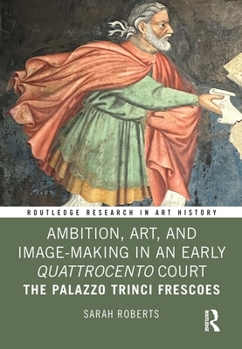Ambition, Art, and Image-Making in an Early Quattrocento Court: The Palazzo Trinci Frescoes
This study provides new interpretations of the little-known but fascinating Palazzo Trinci frescoes, relating them for the first time both to their physical context and to their social, political, and cultural environment. Chapters show how a humanist agenda subverted the historical and mythical associations more frequently used to promote powerful families, to point the Trinci family in new directions. It also shows how the artists involved...
Format:Hardcover
Language:English
ISBN:103273454X
ISBN13:9781032734545
Release Date:August 2024
Publisher:Routledge
Length:210 Pages
Customer Reviews
0 rating





